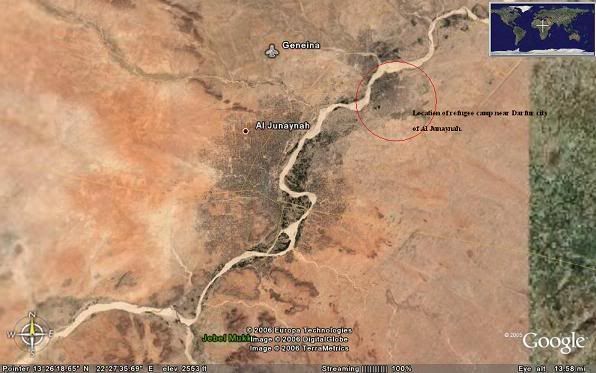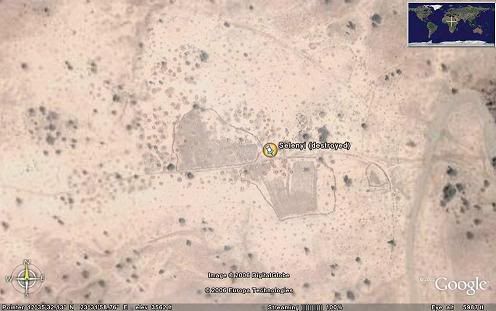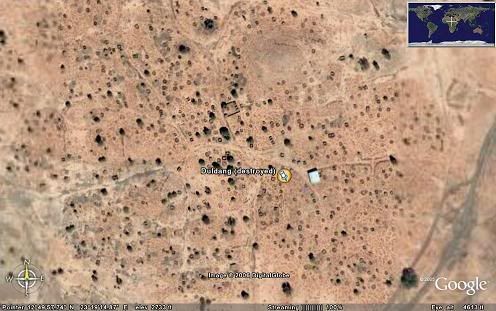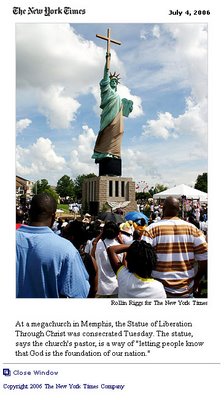anyone reading from
Are you're streets clear of ice?
Just curious.
Documenting life in Pennsyltucky.
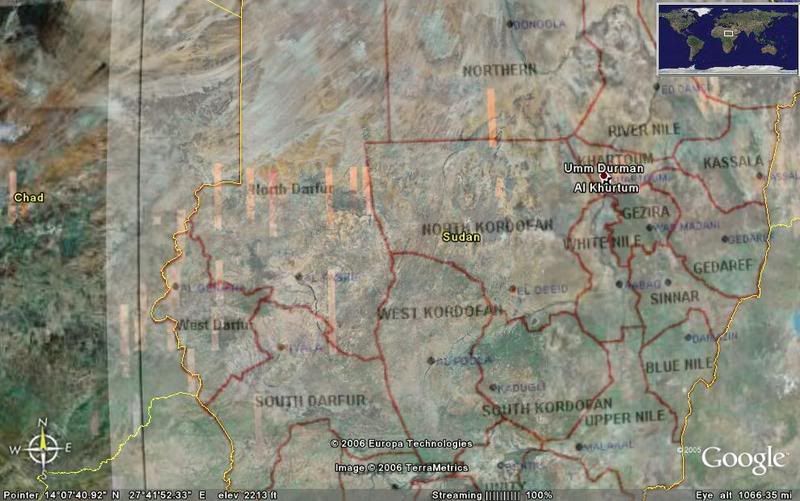
Chad's government has declared a state of emergency in most of the country, following a series of ethnic clashes.
At least 300 people have been killed this month, in violence between Arabs and black Africans, officials say.
The decree covers eastern Chad, across the border from Sudan's war-torn Darfur region, as well as the capital, N'Djamena, and other areas.
Chad accuses Sudan of exporting the Darfur conflict, while Sudan accuses Chad of backing Darfur's rebels.
The state of emergency covers the regions of Ouaddai, Salamat and Wadi Fira, where the violence has occurred.
As a "preventative" measure, it also covers three other regions, as well as the capital.

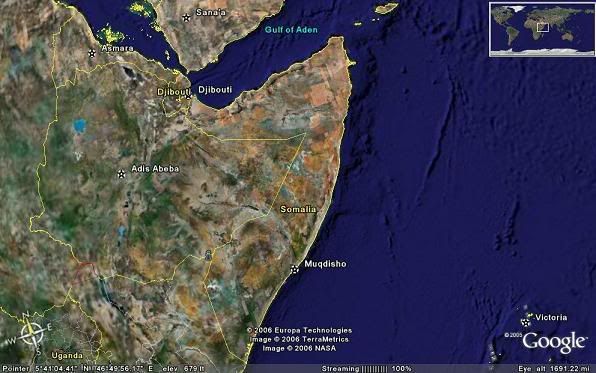
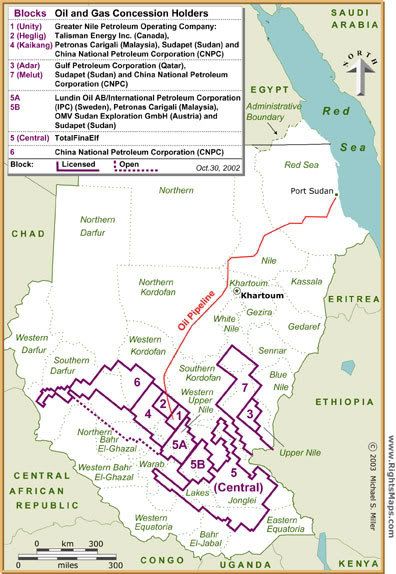

To understand Sudan's standoffishness toward the world, especially the Western world, consider the Ozone café.
Here young, rich Sudanese, wearing ripped jeans and fancy gym shoes, sit outside with scoops of ice cream as an outdoor air-conditioning system sprays a cooling veil of mist. Around the corner is a new BMW dealership unloading $165,000 cars.
"Tell people you only live this life once," said Nada Gerais, a saleswoman.
While one of the world's worst humanitarian crises continues in Darfur, all across Khartoum bridges are being built, office towers are popping up, supermarkets are opening and flatbed trucks are hauling plasma screen televisions through thickening traffic.
Despite the image of Sudan as a land of cracked earth and starving people, the economy is booming, with little help from the West. Oil has turned Sudan's economy into one of the fastest growing in Africa - if not the world - emboldening the nation's already belligerent government and giving it the wherewithal to resist Western demands to end the conflict in Darfur.
American sanctions have kept many companies from Europe and the United States out of Sudan, but companies from China, Malaysia, India, Kuwait and the United Arab Emirates are racing in. Foreign direct investment has shot up from $128 million in 2000 to $2.3 billion this year - despite an American trade embargo.
Marathon Oil, based in Houston, TX, is a partner in the French Total Corp., which holds oil leases in a southern area marked by fierce fighting throughout the war. The Associated Press reported recently that Marathon, a major contributor to the Bush re-election campaign, has resumed payments to the Khartoum government and will be part of Total's operations in the oil fields.
Phase I : Almogran Central Business District A brand new 160-acre Central Business District (CBD). This state-of-the-art, prime commercial real estate will act as a hub for Eastern Africa’s modern business market. Almogran is located on the junction between The White and the Blue Nile. The CBD has been carefully master planned to create a dynamic and livable business environment, with pedestrian-friendly tree-lined streets, a river walk, and a mix of business, commercial, and residential properties. All of this comes together at the only place in the world where it is possible to have a spectacular view of the three Niles.
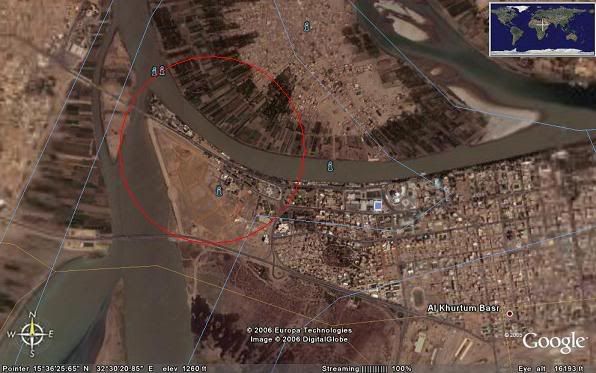
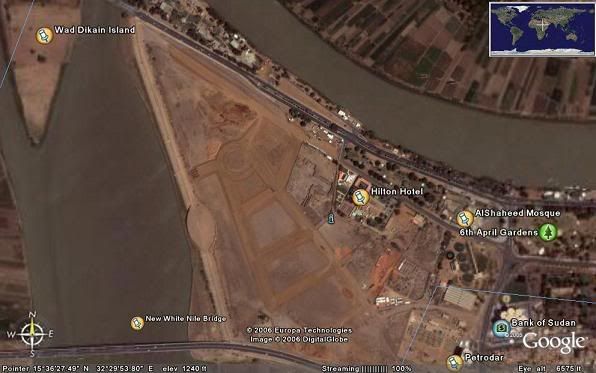
Phase II : Almogran Residential Estate To the south of Almogran CBD, along the banks of the White Nile, lies a 1500-acre residential development featuring a variety of carefully planned neighborhoods of luxurious villas, townhouses, and apartments, complete with supporting neighborhood shops, schools, and recreational and leisure facilities. The development includes an 18-hole signature golf course and resort, public parks and gardens, with preservation of the Sunuut Forest Reserve.
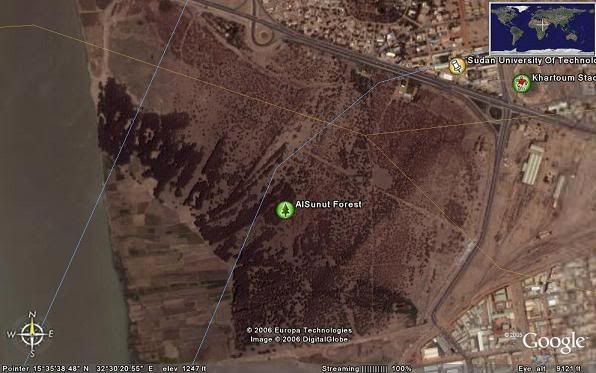
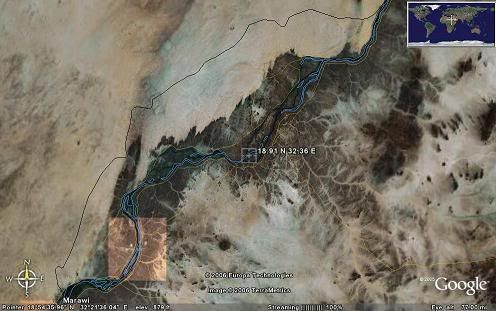
The wealth is hardly evenly shared, and much of Sudan, like Darfur, remains desperately poor. But overall the country's gross domestic product grew 8 percent in 2005, according to the International Monetary Fund, and is predicted to increase by 12 percent this year, largely because Sudan has substantially increased its crude oil production to 512,000 barrels a day - a drop compared with Saudi Arabia or Iran, but enough to bring billions of dollars to a country that until recently was one of the poorest on earth.
The boom is also strengthening the government's hand at home. Bashir has been on an infrastructure binge, pouring hundreds of millions of dollars into roads, bridges, power plants, hospitals and schools, projects that tend to boost any government's popularity. (Bashir seems to need it, with many people across the country, not just in Darfur, openly rebelling against his rule).
Bashir, an army general, seized power in 1989 through a military coup, and one of the biggest beneficiaries of these boom times has been his troops. El-Mahdi said that more than 70 percent of the government's share of oil profits is spent on defense. A government priority is to manufacture guns and ammunition domestically, in case an arms embargo is ever imposed.
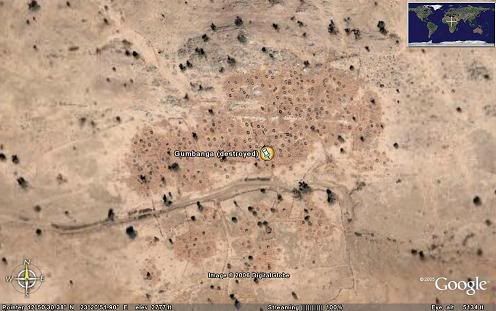
Still, Sudan had already learned to rely on the East, and because of oil exports, the economy had gained a stable momentum of its own. Inflation is now 6 percent; investment and development are reaching beyond downtown Khartoum to Sudan's central agricultural belt, an area rich in wheat and cotton that has traditionally been the engine of the national economy, and to Juba, the main city in the south.
But Sudan is a huge country, Africa's largest, at nearly 1 million square miles, or about 2.6 million square kilometers. Enormous swaths of territory in every direction are neglected, and growing class differences could sow further unrest. Rebel groups in Darfur and other areas, eager for a share in oil profits and power, pose another problem.
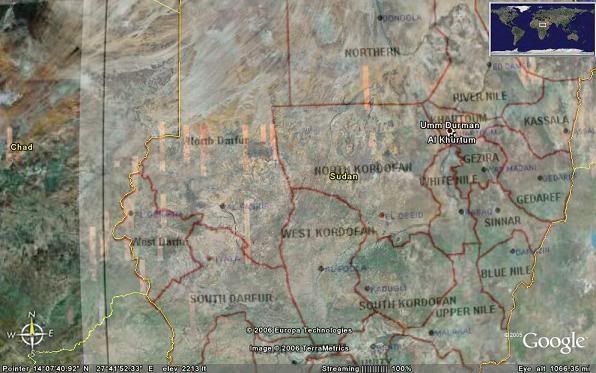
Until April 2005, it was said that whatever oil deposits existed in Darfur were confined to its southeastern corner. However, new seismographic studies brought a surprise. On April 19, 2005, Mohamed Siddig, a spokesman for the Sudan Energy Ministry, announced that a new high-yield well had been drilled in North Darfur -- several hundred kilometers northwest of the existing fields. Seismographic studies indicated that a huge basin of oil, expected to yield up to 500,000 barrels of crude per day, lay in the area. This Darfur discovery effectively doubled Sudan's oil reserves.
"The Americans are not a threat but if the international community lines up against us, that is a different issue," said Osama Daoud Abdellatif, chairman of the DAL Group, a conglomerate that owns the Coke factory, the Ozone café and other businesses. "Everything has been going so well, but Darfur could spoil the party."
Population
41,236,378 (July 2006 est.) - note that the UN estimates a population of 37 million (wikipedia)
Total fertility rate:
4.72 children born/woman (2006 est.)
Nationality:
noun: Sudanese (singular and plural)
adjective: Sudanese
Ethnic groups:
black 52%, Arab 39%, Beja 6%, foreigners 2%, other 1%
Religions:
Sunni Muslim 70% (in north), indigenous beliefs 25%, Christian 5% (mostly in south and Khartoum)
Languages:
Arabic (official), Nubian, Ta Bedawie, diverse dialects of Nilotic, Nilo-Hamitic, Sudanic languages, English
note: program of "Arabization" in process
Literacy:
definition: age 15 and over can read and write
total population: 61.1%
male: 71.8%
female: 50.5% (2003 est.)
-CIA World Factbook
Location:
Northern Africa, bordering the Red Sea, between Egypt and Eritrea
Geographic coordinates:
15 00 N, 30 00 E
Area:
total: 2,505,810 sq km
land: 2.376 million sq km
water: 129,810 sq km
Area - comparative:
slightly more than one-quarter the size of the US
Land boundaries:
total: 7,687 km
border countries: Central African Republic 1,165 km, Chad 1,360 km, Democratic Republic of the Congo 628 km, Egypt 1,273 km, Eritrea 605 km, Ethiopia 1,606 km, Kenya 232 km, Libya 383 km, Uganda 435 km
Coastline:
853 km
Maritime claims:
territorial sea: 12 nm
contiguous zone: 18 nm
continental shelf: 200-m depth or to the depth of exploitation
Climate:
tropical in south; arid desert in north; rainy season varies by region (April to November)
Terrain:
generally flat, featureless plain; mountains in far south, northeast and west; desert dominates the north
Elevation extremes:
lowest point: Red Sea 0 m
highest point: Kinyeti 3,187 m
Natural resources:
petroleum; small reserves of iron ore, copper, chromium ore, zinc, tungsten, mica, silver, gold, hydropower
Land use:
arable land: 6.78%
permanent crops: 0.17%
other: 93.05% (2005)
Irrigated land:
18,630 sq km (2003)
Natural hazards:
dust storms and periodic persistent droughts
Environment - current issues:
inadequate supplies of potable water; wildlife populations threatened by excessive hunting; soil erosion; desertification; periodic drought
Environment - international agreements:
party to: Biodiversity, Climate Change, Climate Change-Kyoto Protocol, Desertification, Endangered Species, Law of the Sea, Ozone Layer Protection
signed, but not ratified: none of the selected agreements
Geography - note
largest country in Africa; dominated by the Nile and its tributaries
CIA World Factbook
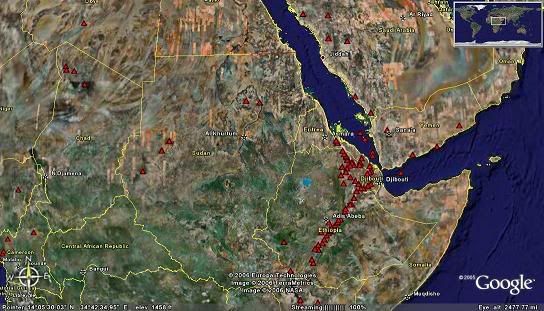
Summit Elev: 3042 m
Latitude: 12.95°N
Longitude: 24.27°E
The most prominent feature of the vast Jebel Marra volcanic field, located in the Darfur province of western Sudan, is the youthful Deriba caldera. The 5-km-wide, steep-walled caldera, located at the southern end of the volcanic field, was formed about 3500 years ago at the time of the eruption of voluminous airfall pumice and pyroclastic flows that traveled more than 30 km from the volcano. The Jebel Marra volcanic field covers a broad area of the Marra Mountains and contains early basaltic lava flows overlain by thick sequences of pyroclastic-flow deposits. The northern part of the volcanic field displays trachytic lava plugs and spines forming residual inselbergs and young basaltic scoria cones and lava flows. Ash eruptions at Deriba caldera may have continued into early historical time (Burton and Wickers, 1966), and fumarolic activity has been observed on the flanks of a small pyroclastic cone within the caldera.
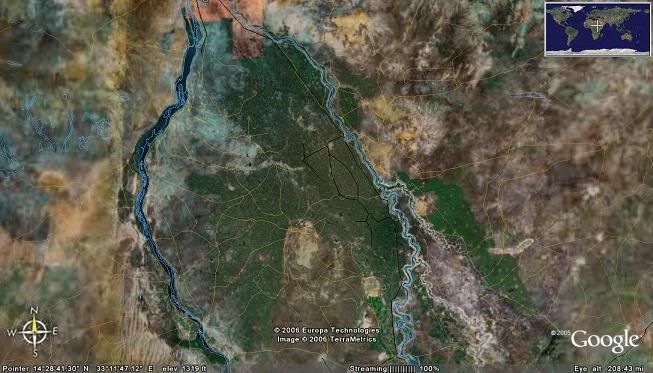


Darfur covers an area of some 493 180 km² (196,555 miles²)—about three-quarters the size of Texas, more than half the size of Kenya or slightly smaller than France. It is largely an arid plateau with the Marrah Mountains (Jebel Marra), a range of volcanic peaks rising up to 3000 m (10,100 ft), in the center of the region. The region's main towns are Al Fashir, Nyala, and Geneina.
There are four main features of the physical geography. The whole eastern half of Darfur is covered with plains and low hills of sandy soils, known as goz, and sandstone hills. In many places the goz is waterless and can only be inhabited where there are water reservoirs or deep boreholes. While dry, goz may also support rich pasture and arable land. To the north the goz is overtaken by the desert sands of the Sahara. A second feature are the wadis, seasonal watercourses ranging from small rivulets that flood only occasionally during the wet season to large wadis that flood for most of the rains and flow from western Darfur hundreds of miles west to Lake Chad. Many wadis have pans of alluvial deposit with rich soil that are also difficult to cultivate. The west of Darfur is dominated by the third feature, basement rock, sometimes covered with a thin layer of sandy soil. Basement rock is too infertile to be farmed, but provides sporadic forest cover that can be grazed by animals. The fourth and final feature are the Marrah Mountains, volcanic plugs created by a massif, that rise up to a peak at Deriba crater where there is a small area of temperate climate, high rainfall and permanent springs of water.
The rainy season is from June to September, transforming much of the region from dusty brown to verdant green. As much of the population of Darfur is agricultural, the rains are vital. In normal years, millet, a mainstay crop is ready to be harvested by November. Once harvested, the dry stalks may be fed to domestic livestock. In the far northern desert, years may pass between rainfall. In the far south, annual average rainfall is 700 mm and many trees remain green year-round.[1]
